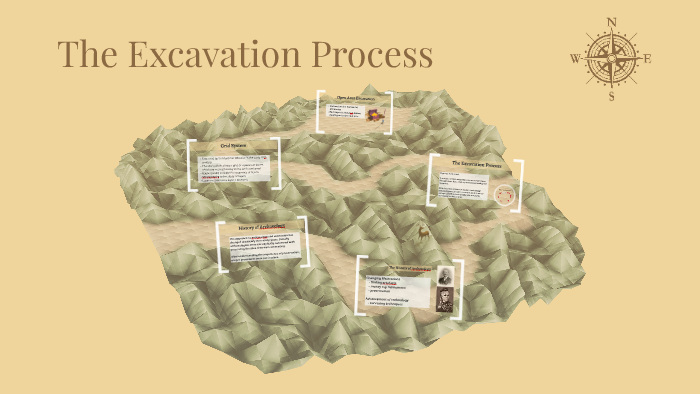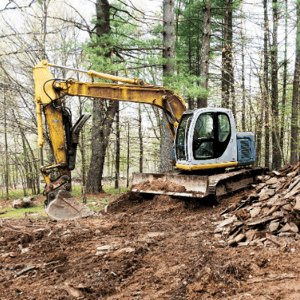The Of Concrete Contractors
Wiki Article
7 Simple Techniques For Mini Excavator
Table of ContentsSome Known Details About Trencher Some Known Questions About Demolition.Unknown Facts About TrencherAll about Grading ContractorsExcitement About Excavation Companies


Scrapers or Pans excavate soil in one location, haul and unload the dirt in one more spot (concrete contractors). It is difficult to match the efficiency of scrapers for cut/fill dirt operation if the haul distance is less then a mile. Scrapes are generally drawn by a rubber tire wheel tractor as well as are sometimes pushed with the cut area by a bulldozer.
There are many times that scrapes are not made use of for website grading and a dump vehicle is employed: the haul might be to long, the haul might go across roads where scrapes are not allowed, acid rock may be come across, devices accessibility, etc. Dump vehicles are in usual usage as well as most likely need little discussion.
Lots of trucks have a top-hinged tailgate that can not unload any kind of rock wider after that the tailgate width. "Rock body" beds, on the various other hand, have no tailgates and can dump any dimension rock, although their volume capacity is lessened. These web links show tools specs for several typical dump vehicles. Compaction Devices boosts the thickness of the soil and also sometimes offers a smooth, rolled surface area.
How Excavation Contractors Near Me can Save You Time, Stress, and Money.
From an easy examination pit to percussion boring to core drilling the owner has progressively a lot more costly alternatives that yield increasingly far better information about the website underground. For instance, the Owner on a 100,000 SF structure task may accredit twenty boring areas with split spoon soil examples taken up until rock is reached and after that core samples of rock.Recognizing the type and quality of rock (from the core samples) and also location of rock (from the dirts boring) is a real benefit in jobsite preparation. Conversely, the Proprietor of a 100,000 SF building might choose to continue with no geotechnical screening whatsoever. The decision regarding geotechnical screening is generally made by a Proprietor without any input from the Construction Manager.
The area on Soils and Geology aids you comprehend the terms in the geotechnical record. An expertise of the approximate place of the rock aids the Construction Manager to prepare the series of actions adhering to rock excavation. If rock remains in one corner of a big building task, for instance, the earth excavation can begin at the contrary end of the building in order to start structure work soonest.
Starting the structure job early would be an excellent concept if the rock can be removed by ripping. However, if the rock is extremely tough and also needs considerable blasting, it might be see this prudent to hold structure work till the blasting is completed. The Building and construction Supervisor should collaborate these sorts of choices and also use all the technical day readily available.
Facts About Demolition Revealed
Unidentified excavation states that all rock or other unanticipated materials (excluding dangerous products) run into in the sitework will certainly be the responsibility of the Professional at no adjustment in contract cost. An unclassified excavation is simpler from a book-keeping perspective and also positions the duty for geotechnical conditions onto the Sitework Service provider.Just How Water Impacts Sitework? It's amazing what a heavy rainfall can do to a construction job. Prior to the rainfall, the site may be completely dry, heavy devices successfully moving planet, the other professions smoothly performing their work. Within hrs the job can be a careless, mud-hole with employee effectiveness reduced to concerning 10%.
In a lot of areas of the world, the Building Supervisor have to remember a straightforward truth: IT WILL CERTAINLY RAIN. Excellent preparation can decrease the damage and disturbance of a hefty rain to a jobsite. Commonly the excavation and grading is delegated the Sitework Professional (and also their Foremen is accountable to monitor as well as direct the heavy devices and operators).
The Building Manager need to be continuously mindful of what rainfall will certainly do to the job website. It is not unusual for the Sitework Foreman to work their heavy tools for maximum effectiveness as well as hope it does not rainfall. One of the most effective means to plan for rain is to slope all grades to drain and to smooth rolled the surface prior to a rain.
The Best Strategy To Use For Excavation Companies
The Building and construction Supervisor have to be far-sighted adequate to guarantee that heavy rainfall does not stop work on the task much longer than required. Daily conversations with Sitework Foremen might be needed to attain this objective. Any time excavation is required below the existing groundwater level on a job, the procedure of dewatering must be considered.In a truly cohesive soil, the water travels so slowly through the clay or silt that dewatering is not normally required for the relatively short time of excavation. Dewatering might be needed for a solitary ground excavation or for an entire job site. One of the most common dewatering techniques are trench drains, deep wells and well factors.

Ground water seepage can likewise be decreased by cutoff approaches such as sheet stacking. High dewatering prices have faded the profit margins on much too numerous projects.
This option should always be taken into consideration when evaluating the possibility of dewatering. Certainly the choice is only feasible if gravity can run the water to reduced ground. Trench drains can be cut with a backhoe as well as full of a coarse, granular material (# 4 stone for instance), however care has to be worked out in selecting the water outlet type and area.
The 9-Minute Rule for Grading Contractors
A siphon, by interpretation, utilizes atmospheric click to read more stress to carry water from one altitude, up over an obstacle, to a reduced elevation. The pipes in a siphon system should be airtight as well as some ingenuity is usually called for to completely fill the siphon pipe. The siphon pipe need to be full for the siphon to start.A deep well contains a pump, hose and also a vertical well casing. The pump consumption is at the base of the well covering (typically some crushed rock is put there as a filter tool) (excavation contractors near me). The water is inflated the hose pipe, out of the well housing, and to an appropriate discharge place.
In a rugged sand, as an example, a huge area can be pumped to near the pump intake elevation. A less absorptive soil, on the other hand, lowers the performance of a deep well. Because the pump is normally at the base of the deep well, there are no height constraints due to vacuum lift, as well as deep wells can reduce the groundwater over 50 feet.
On the base of the wellpoint there is a her explanation 2 foot long screen and shutoff, water jets out of this valve and develops an opening right into which the wellpoint pipeline can be reduced. This hole is typically made a bigger diameter (for instance 10 inches) to allow for a coarse sand backfill to help filter the water (mini excavator).
Report this wiki page